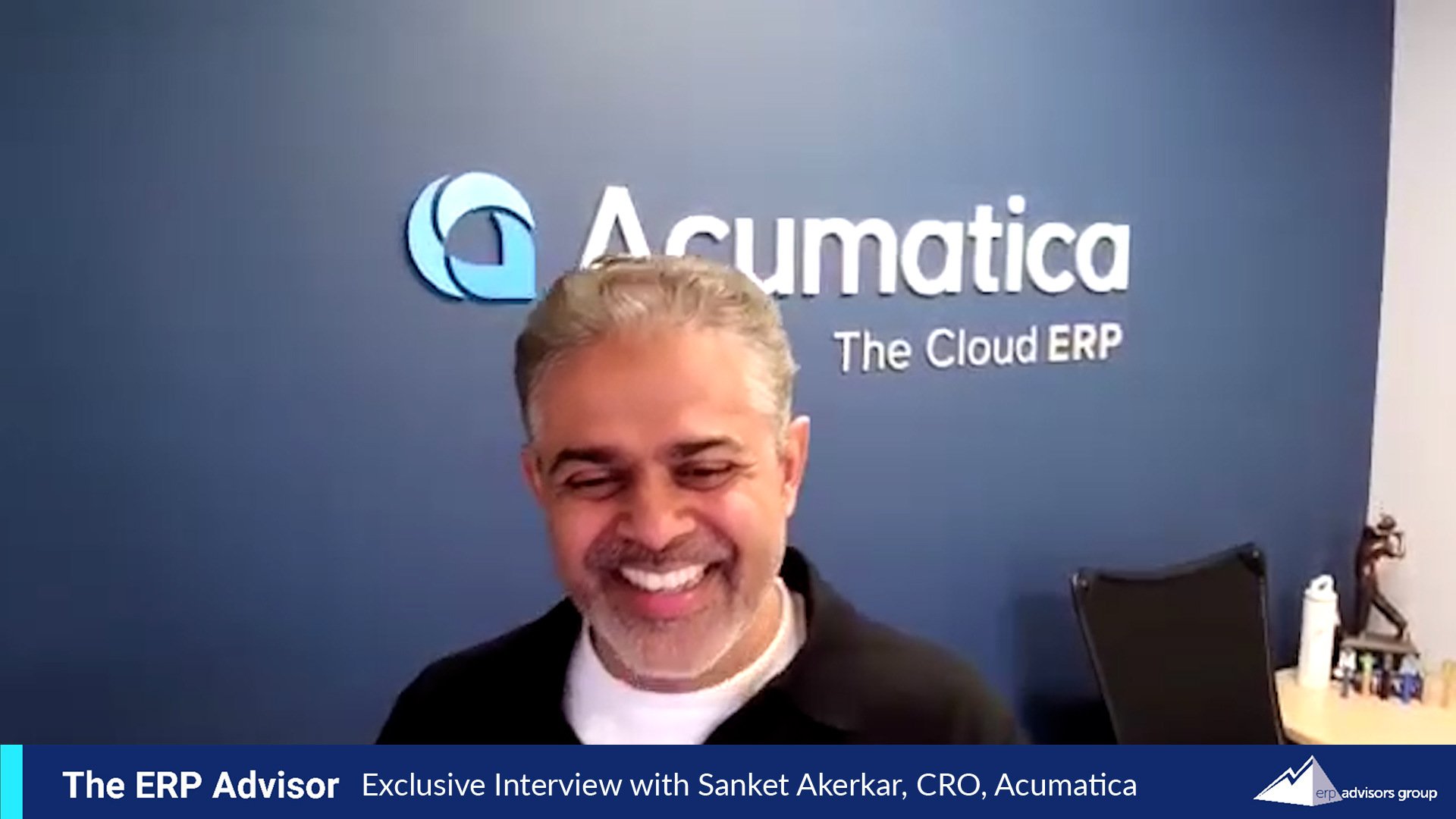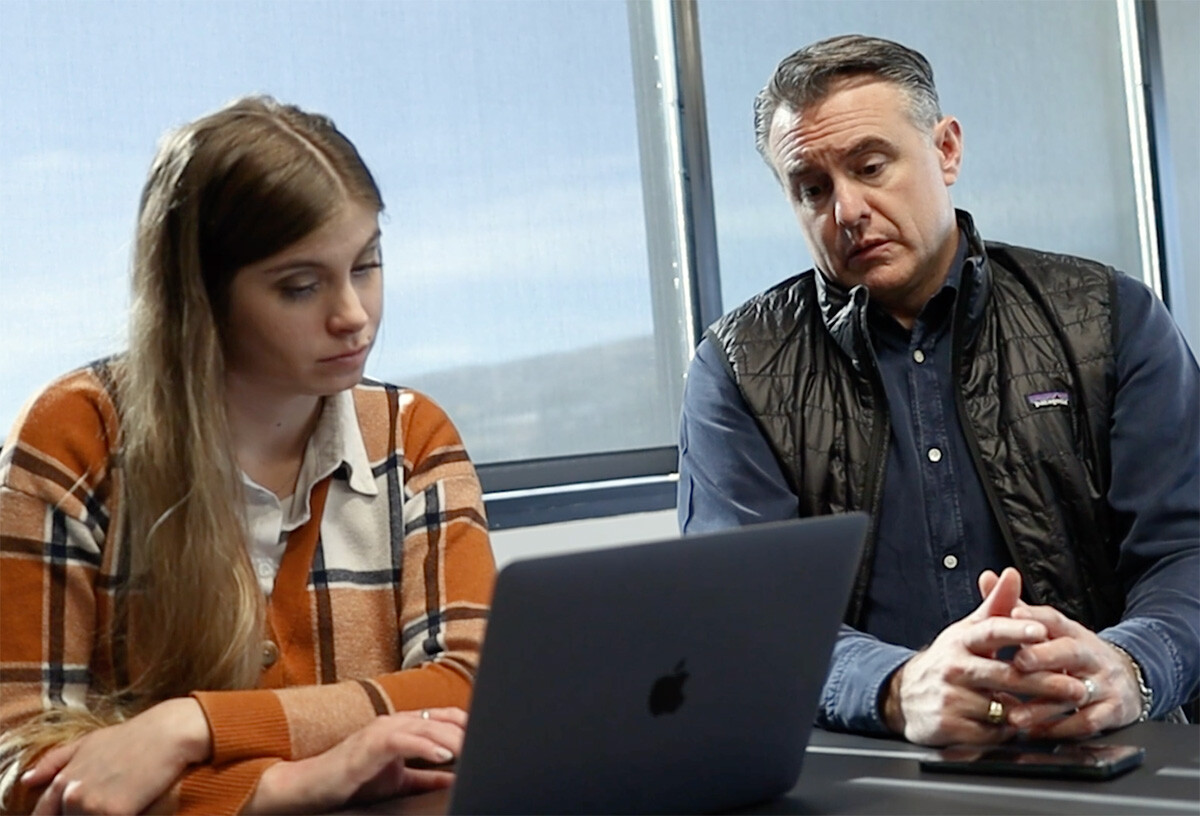
Manufacturers have unique operations that may require resources beyond the offerings of a standard Manufacturing ERP. Many businesses need best-of-breed manufacturing software solutions, whether MRP or MES offerings, to solve their organization’s pain points, including manual tracking and reporting on material movement, disjointed communication surrounding engineering designs, revisions, BOMs, and an overall lack of industry best practices baked into operations. In this episode of The ERP Advisor, Shawn Windle will assist manufacturing companies in uncovering their needs to answer the age-old question: why would our business need an MRP versus an ERP?
How to Identify the Best Manufacturing Software for Your Business
Manufacturers face unique operational demands which can be enhanced with different kinds of software applications. In a software market full of options, how can a manufacturer determine if they need more than an ERP? Some companies seek out solutions like Material Requirements Planning (MRP); others rely on a best-of-breed Manufacturing Execution System (MES) as a stand-alone solution or even to supplement their ERP. So how do manufacturers know once and for all if they need manufacturing-specific solutions besides just an ERP?
Why are Manufacturing Requirements so Unique?
Manufacturing is a complex industry where operational nuances can vary from one type of manufacturer to the next. They must start by understanding their manufacturing process, whether it is discrete, process, or batch. Additionally, understanding whether they are make-to-stock, make-to-order, or engineer-to-order can drill further into their unique needs for software. Understanding the business at its core is the first step in truly identifying its requirements. Conveying your specific requirements to potential software vendors is vital in making sure you consider the right products that will actually work for your business.
Confronting Common Manufacturing Pain Points
Each manufacturer is different and operates in various ways based on its focus; from make-to-order to engineer-to-order to make-to-stock and more, the requirements change from one operational structure to the next. Common pain points felt across the industry include:
- Paper-based processes and manual intervention create inefficient, time-consuming, and duplicative work.
- Legacy ERP is outdated and unable to adapt to growth within the organization or integrate into newer systems like CRM, eCommerce, or EDI.
- Tracking and reporting on material movement is manual and time-consuming.
- Reliance on emails for key communication of engineering designs, revisions, and BOMs versus systematic tracking.
Check out our ERP for the manufacturing industry page or contact an ERP selection consultant for the complete list of common pain points.
Regardless of why you are considering a manufacturing software upgrade, your company must identify your requirements prior to approaching the vendor, or you will look ill-prepared and ultimately waste the time of all parties involved. It is the responsibility of the business’s leadership team to know the kind of manufacturer they are and communicate what that means to them. This could be construction, project-centric, or other nuances that make your company unique. From there, the vendor can assist you in evaluating the right solution.
But Does Your Manufacturing Business Need More Than Just an ERP?
Manufacturers have a multitude of basic-level requirements including supply chain, inventory management, purchasing management, and warehouse management, but most of the time, the requirements do not stop there. There are other key components of their operations that could signal the need for solutions beyond ERP.
Some manufacturers may need to consider an industry-specific solution for deeper requirements like advanced material movement, tracking labor, or quality module. Software functionality which handles production planning, scheduling, advanced planning and scheduling, or materials planning may be necessary, but not possible until core ERP transactional information is implemented and working.
MRP, MES, or ERP?
There is no definitive guide to what a specific manufacturer will need, but there are basic guidelines that may signal to a company that they need to evaluate an MRP or MES solution or implement a strategy that combines the benefits of ERP, MES, and MRP together.
First, consider that not every ERP automates all of the above requirements. Many vendors offer best-of-breed bolt-on solutions to deliver functionality outside of the core ERP, but these solutions are not necessarily native out-of-the-box. Depending on your strategy and requirements, this may not be the best route for your business. A strong ERP implementation partner should know their own product as well as adjacent products to suggest; this emphasizes the need to select a partner who specializes in your vertical. But don’t underestimate your responsibility in the selection process – you must not only know and communicate your requirements and business strategy to the vendor and partner, but you must validate that you can SEE that the software can perform the functions.
If a manufacturer has all the basics in place (such as purchasing, inventory, manufacturing, work orders, quality, distributing, and accounting) and it is working for their business, THEY SHOULD NOT CHANGE ANYTHING. If the application is working and the requirements are being met, there is no need to add an MRP or MES solution.
Alternatively, if there are fundamental gaps in operations, a new solution should immediately be considered. If a manufacturer needs to know the step-by-step phase of what is happening to produce a product, what material they are waiting for, to carefully track people and their time, or empower those on the shop floor to access and manipulate great data, they may need an MES solution. On the other end, a manufacturer with more complex requirements within the supply chain, the purchasing of international parts, or complex material planning may be a perfect fit for an MRP; although, businesses should be wary and prepared for the upkeep of a new MRP. An MRP relies on historical data for creating a forecast for future purchases. Therefore, if there is a reason to upgrade from legacy ERP, bite the bullet to get the ERP implemented and burned in first before attempting the MRP initiative. Otherwise, the labor and cost of implementing an MRP over the top of the outdated ERP will be wasted in the near future when the ERP is replaced.
Ultimately, the simpler you can go as an organization, the better. If you can get away with a single application to run your business that does enough and is good enough, then do it. The ERP industry is plagued with high failure rates and a big part of that is everyone always wanting bigger and better and more. We heavily encourage our clients to start simple and grow on a gradient to encourage future success.
Selecting the Right Manufacturing Application
As in any other ERP selection, regardless of industry, manufacturers absolutely need to understand their needs because this is the single most important step to selecting the right software application. By understanding your needs, you can approach the vendor with clear requirements and ease the process by evaluating only the most viable solutions.
During these early stages, you should also gather a general idea of pricing because your business should not pursue an ERP project that it cannot afford. We recommend that when you are exploring your options you should reach out to the vendor for pricing information based on the modules you believe you will need and the number of users you will have at a high level. If you need expert guidance, download ERP Advisors Group’s checklist for the most important questions to ask an ERP vendor during the selection process. However, be prepared for the vendor to hesitantly answer these questions because they will not want to make estimates before they have identified exactly what your company needs through the proper processes. Whatever the estimate, you should budget for more to plan for the expenses also associated with data migration, change management, implementation, or other costs.
With these factors in mind, you can develop a clear business plan for your current ERP or work with your partner to evaluate the need for an MRP or MES solution.
Conclusion
Ultimately a business needs a strong transaction processing system that can perform all the core functions found in a typical ERP. Until a manufacturer has solved those issues, adding an MES or MRP may provide a quick hit fix, but the value may be lost when starting over with a new ERP that does not have the historical information an MRP relies on that will not integrate into the new MES. If you are struggling to evaluate the needs of your business, contact an expert ERP consultant today for a free consultation, or download your guide to vetting software solutions below.





